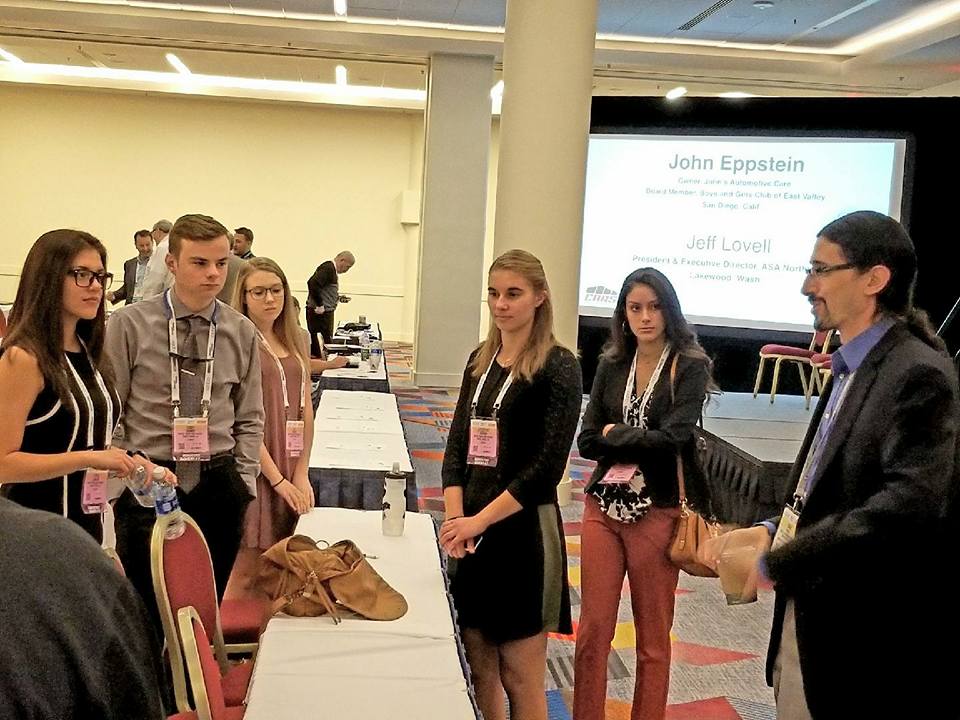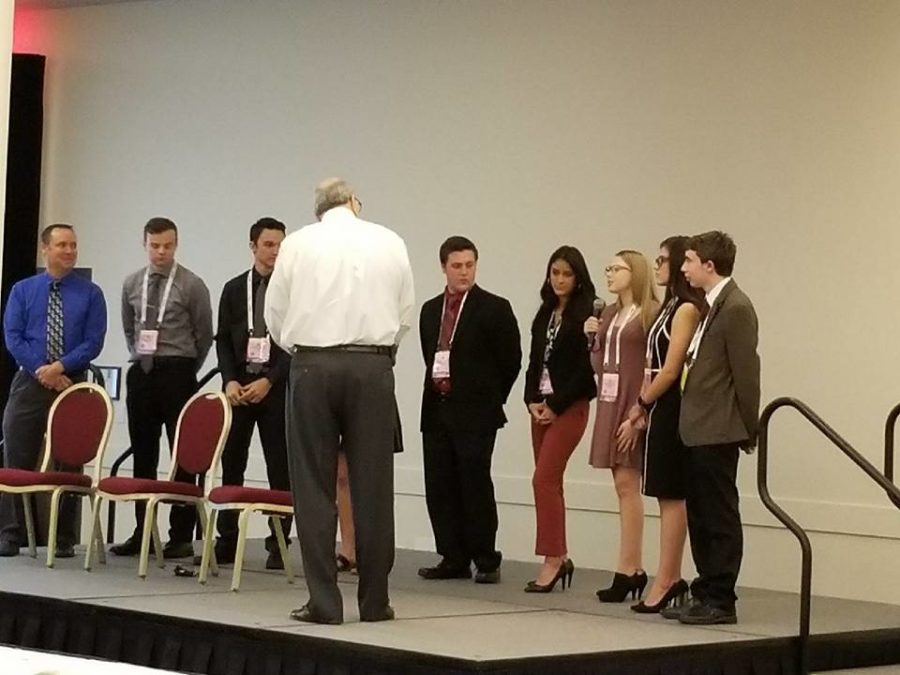STEM Drives Forward to New Challenges and Opportunities
Courtesy of Wheat Ridge STEM Engineering Facebook
Students from Wheat Ridge High School’s STEM department presenting at the AAPEX conference in Las Vegas.
November 13, 2017
Entering its fourth year at Wheat Ridge, the Science Technology Engineering and Math, or STEM, program continues to take on new projects and challenges.
Since its first year in 2014, the program has almost doubled its numbers from 40 students to 80. This growth has accompanied success in competitions such as the Shell Eco Marathon and NASA’s Human Exploration Rover Challenge.
This year, the STEM class is taking on four main projects. They will once again send a prototype to the Shell Eco marathon, along with an urban concept. They are also participating in the NASA’s Human Exploration Rover Challenge for their second year. In addition to these competitions, they will also be competing in the University of Colorado at Denver’s Human Powered Vehicle Competition. Courtesy of Wheat Ridge STEM Engineering Facebook
Courtesy of Wheat Ridge STEM Engineering Facebook
The Shell Eco Marathon is a North American competition wherein high schools and colleges compete to construct the most fuel-efficient car. There are several categories of competition. Wheat Ridge’s STEM team competes with a hydrogen fuel cell run prototype and an urban concept car. The urban concept is a car that is designed to be more practical.
The Shell Eco Marathon has moved from Detroit, Michigan to Sonoma, California, and will take place in the last week of April. Some changes to the competition have altered the schedule in the STEM department. In past years, the deadline for having bodies for the cars was in February. This year, it is around Thanksgiving. This much sooner deadline has caused the program to focus more on the building of the car than any marketing or fundraising, which usually occupies first semester.
NASA’s Human Exploration Rover Challenge is held in early April. It challenges students to design and build a rover capable of traversing a challenging exoplanetary-like landscape. The teams will also be challenged to complete mission objective tasks in a six-minute time period. They will be rewarded based on which tasks they complete. Last year, our Farmers were the second place rookie high school team.
This year, the STEM program has also moved into the computer lab and classroom across from and next to their shop in what was the auxillary English hall. According to Charles Sprague, the teacher and head of the STEM program, this move has, “made things easier. It’s much nicer to have everything in one place and not rush across the school.”
Around half of the students in the program are returning members. Returning members have complete freedom over which projects they choose to work on and are also able to suggest new projects to the class. New members are trained in basics of 3D modelling software. They are then put on projects. New students also gain experience by working in the shop with their more experienced peers.
Around 16 to 20 students will travel to Sonoma for the Shell Eco Marathon. About eight will attend the NASA Rover competition, which is in Huntsville, Alabama, at NASA’s headquarters.
The program also recently had the honor of sending a group of students to present at the AAPEX Sands Expo in Las Vegas. They were asked to attend by senior directors and CEOs. The expo is a technician trade show for the automotive industry.
As the year continues to move forward, along with STEM’s deadlines, the entire team is scrambling to meet them. Even entering the now STEM and English hallway can be hectic. Their growth from their first year has been unusual for Wheat Ridge programs, and they will continue to work toward expanding while completing their projects. The entire community is watching for their future success, and they continue to work toward it.

